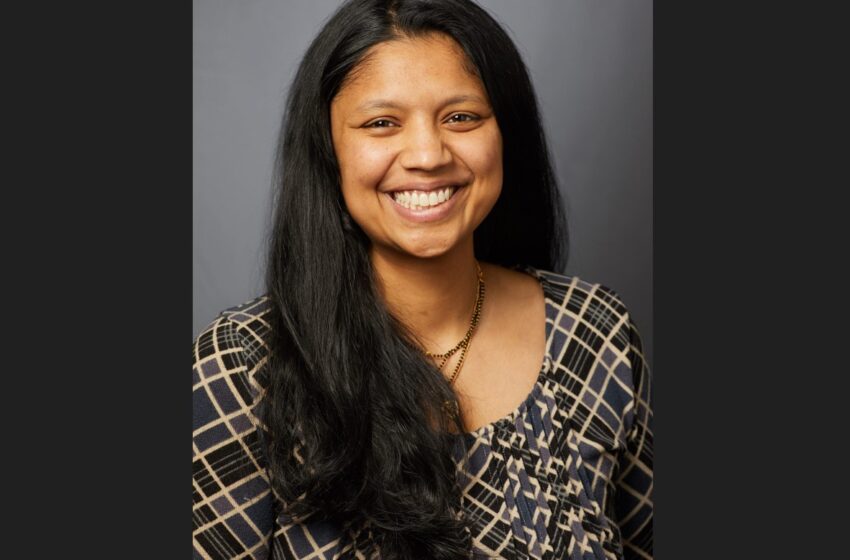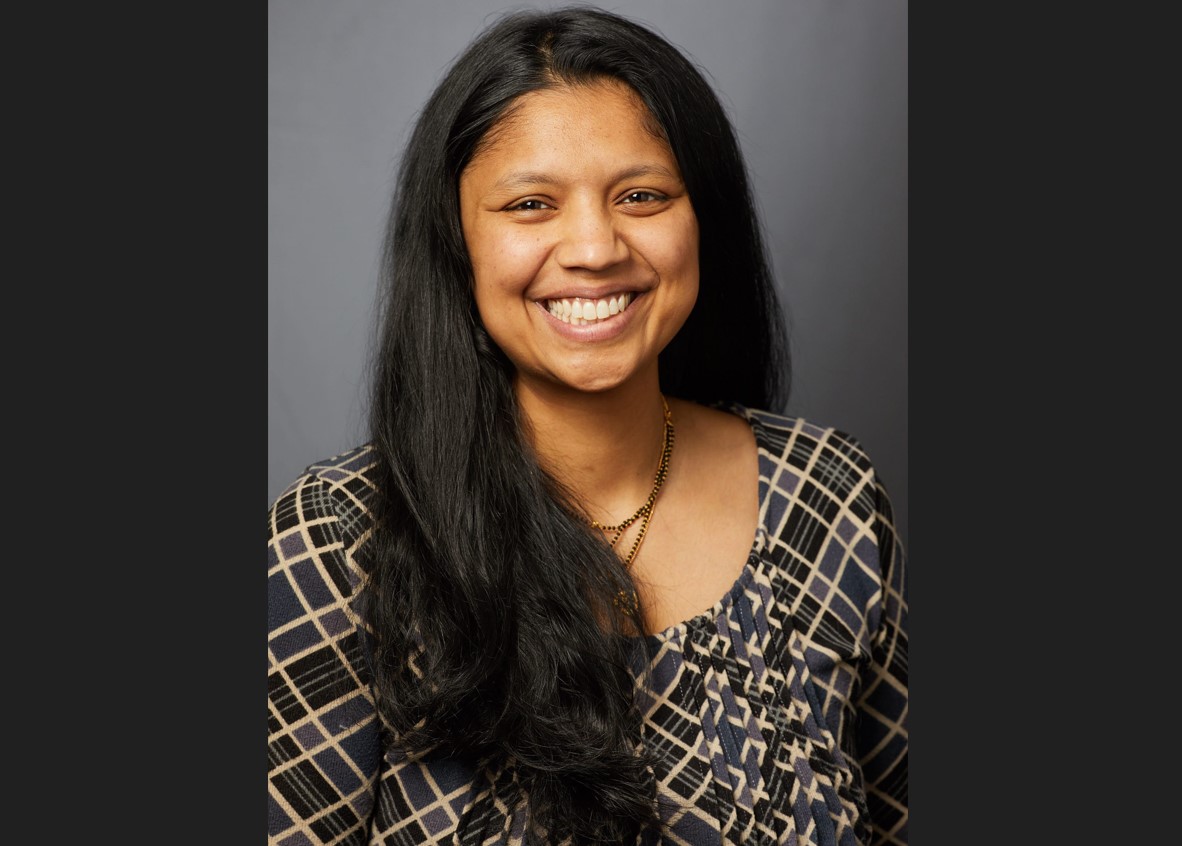Some skin cancers affect people of color more

 Indian American Yale Physician Dr. Sarika Ramachandran talks about the importance of diversity in clinical trials
Indian American Yale Physician Dr. Sarika Ramachandran talks about the importance of diversity in clinical trials
Dr Sarika Ramachandran is an Indian mother of four and Associate Professor of Dermatology at Yale School of Medicine. She is one of 63 physicians recently accepted to the Robert A Winn Diversity in Clinical Trials Award Program.
The Winn Award Program was created in 2020 with a $100 million pledge by the Bristol Myers Squibb Foundation as part of its commitment to health equity, inclusion, and diversity.
Read: 19-year-old launches artificial intelligence research organization (February 14, 2023)
Dr Ramachandran who is also the Vice Chair for Diversity, Equity and Inclusion; Co-Founder and Co-Director of the Rheumatology-Dermatology Clinic at Yale is trying to overcome barriers to clinical trials in communities of color.
She talks to the American Bazaar about the importance of recognizing disparities that exist with regard to people with dermatologic diseases.
AB: Tell us about the Robert A Winn Diversity in Clinical Trials program. Why do you think diversity in clinical trials is important, and what have been the implications of underrepresentation of communities in clinical trials?
SR: As the newly appointed Vice Chair of Diversity, Equity, and Inclusion, Associate Professor of Dermatology, and co-founder and co-director of the rheumatology-dermatology clinic at Yale School of Medicine, improving diversity and representation in clinical trial patients is imperative to my work.
Through my clinical interest in autoimmune connective tissue diseases, I work closely with patients with rheumatic and dermatologic diseases such as lupus, which greatly impacts people of color.
Aligned with my vision to improve healthcare for all populations, I applied to the Robert A. Winn Diversity in Clinical Trials Award Program (Winn Award Program).
The Winn Award Program was established by the Bristol Myers Squibb Foundation in 2020 under its commitment to health equity, inclusion, and diversity and aims to extend the reach of clinical trials in diverse and underserved patient populations in the US.
The program currently offers two awards: 1) Winn Career Development Award (Winn CDA), a two-year program designed to support diverse physicians and those who have shown a commitment to increasing diversity in clinical trial research within their local communities, and 2) Winn Clinical Investigator Pathway Program (CIPP), a six-week summer externship program for underrepresented in medicine students.
In October 2022, I was one of 62 physicians selected to be part of the second cohort of the Winn CDA. To note, applications for the third cohort are currently open if other early-stage physicians are interested in being part of this medical mission to diversify clinical trials.
While there are various barriers in clinical trials from transportation to lack of health insurance, I have seen that medical distrust is a fundamental reason which deters diverse communities from being part of trials. In my clinic at Yale School of Medicine, it is crucial my research is reflective of the diverse communities which have higher rates of certain skin diseases.
Read: 4 Indian Americans among 2023 Health Care Power 100 (January 31, 2023)
As I am Indian-American and a physician with skin of color, I have used my own personal background to relate and understand other communities of color. By doing so, this is one step in rebuilding trust within the community and I hope it will encourage others with similar disease states to partake in clinical trials.
Lupus disproportionately affects patients with skin of color. In my rheumatologic dermatology clinic, it is one of the most common diseases seen and treated.
As cutaneous lupus can lead to permanent scarring, disfigurement and hair loss, it is imperative that we recruit patients who are affected by this disease into clinical trials.
With the support from the Winn Award Program and Bristol Myers Squibb Foundation, I hope to further my clinical research and uncover life-saving and life-changing treatments and change the future of healthcare.
AB: How does the lack of representation in trials affect underserved communities?
SR: In looking at barriers faced by lupus patients to participation in clinical trials, authors of a study identified the following five categories: Access, Opportunity, Mistrust, Health literacy and Cultural.
When traumatic injury is excluded (suicide, homicide and accidental trauma), lupus was found to be the fifth leading cause of death among Hispanic and Black females between 15 and 24 years of age.
Despite this, in randomized clinical trials for lupus, while cases for white individuals in the US account for 33% of systemic lupus erythematosus (SLE), a common type of lupus, they made up 51% of those enrolled in randomized clinical trials for lupus.
On the other hand, the Black community made up 43% of SLE cases and accounted for only 14% of those enrolled.
This data highlights a research gap within our medical system. Diversity in clinical trials is imperative to conducting research to help discover life-saving medical treatments for diverse populations.
A lack of diversity has led to a greater risk of misdiagnosis and mistreatment within diverse populations. Through my own research, patients treated at the Yale clinic have skin disease due to systemic diseases that greatly affect people of color.
By diversifying clinical trials across various disease states, it will result in safer medical practices, better understanding of treatments based on genetic variation, and ultimately address the inequities in our medical system.
Read: AAPI President Dr. Ravi Kolli: Indian American doctors have ‘paid our dues and won the respect,’ ‘we have a seat at the table now’ (December 30, 2022)
AB: While South Asians and Indian Americans in particular are more likely to have medical insurance and are mostly in a position to afford insurance-based medical services in America, do you think that underrepresentation still affects them and how?
SR: South Asians and Indian Americans can face inequities and disparities in healthcare. In an exploratory study of South Asians in New York City conducted by NYU School of Medicine Center for the Study of Asian American Health, participants noted language, cultural, and communication barriers to healthcare.
Although national studies have reported lower rates of uninsurance, this study of South Asians in New York City reported that 31% of participants reported a lack of health insurance.
Reference:
- Cao A, Ahmed T. Islam N, Community Health Needs & Resource Assessment: An Exploratory Study of South Asians in NYC. NYU School of Medicine. Center fStudy of Asian American Health. 2007. https://med.nyu.edu/sites/default/files/asian-health2/chnra_southasian_0.pdf
AB: Statistically, Indian Americans or South Asians are more likely to develop heart diseases. Is this also true for certain types of skin ailments or cancers?
SR: Acral lentiginous melanoma is a type of melanoma that Asians are more prone to and can affect the hands, feet, nails and other locations. Melanomas at these locations can be difficult to detect and it is important to be aware to monitor these parts of the body.
Indian Americans also tend to deal with skin diseases and post-inflammatory changes. Post-inflammatory changes can affect the pigmentation of the skin long after the original rash has resolved.
In addition, a survey conducted a few years ago revealed that the most common diagnoses among Indian Americans were acne, eczema, fungal infection, warts and moles. Further, the authors of the study noted that the most common concerns were dry skin, hair loss, uneven skin tone and acne.
AB: Particularly in the South Asian American community, what kind of health information is lacking? What is it that they need to know and/or do more?
SR: There is a myth that skin cancer does not affect patients with skin of color. This is not true. Skin cancer can occur in any skin type and it is important for everyone to protect themselves from the sun and its UV rays.
AB: Is it true that Indian Americans tend to be less careful about sun damage than their other American counterparts? What would you advise as a doctor for a healthy living?
SR: In terms of healthy living from a skin perspective, there are many things we can do to improve the health of our skin. Using sun protection is beneficial. This can help prevent skin cancers and prevent photoaging.
Sun protection can include using sunscreen, wearing sun protective clothing such as hats and shirts and pants with a UPF, and sitting under sun umbrellas. Also, avoiding spending time outside during the midday can help prevent sun damage.
In addition to this, having a regular moisturizing regimen can be helpful.
AB: With melanoma, most minority groups tend to have poor prognosis. Can you explain more on this?
SR: Diagnosis may be delayed which may potentially lead to worse outcomes. As I shared above, acral lentiginous melanoma is seen most commonly in patients with skin of color and occurs in areas where detection may be more challenging.
Patients may also face socioeconomic barriers to accessing care both before diagnosis and once the diagnosis is made. This may lead to poorer outcomes.
AB: Are there certain melanomas South Asians may be more prone to? Are there any preventive measures? Any warning signs one must be aware of?
SR: Patients with skin of color are more prone to acral melanomas. These are melanomas that affect the palm of the hands, soles of the feet, under the nails and oral areas.
It is important to regularly monitor these and all areas of the skin for new or changing growth. In addition to self-exams, dermatologists can help do full body skin exams to detect any lesions that may be suspicious for skin cancer.
The ABCDEs of skin cancer can help to identify lesions that may need further evaluation. Lesions that are (A)symmetric, have irregular (B)orders, have multiple (C)olors, have a (D)iameter greater than 6 mm and are (E)volving — including itching, bleeding, irritating or changing in some way- may benefit from an evaluation from a board-certified dermatologist.
